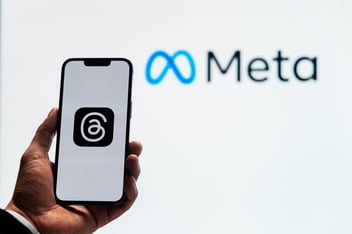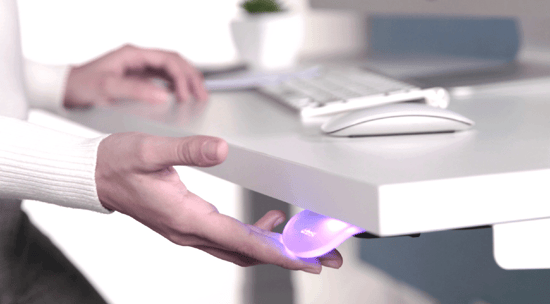Types of Workplace Meetings: Get Productive and Successful Gatherings
Why Understanding Meeting Types Matters in Today’s Workplace
Walk into any modern office today, and you’ll quickly realize: it’s no longer just about desks and chairs. It’s about creating spaces where ideas move, decisions happen, and people actually want to engage. And nowhere is this more visible than in how we design for meetings.
Meetings, after all, are where the action happens. Whether it’s aligning a project, dreaming up the next big idea, training a team, or managing a crisis, meetings shape the heartbeat of an organization. But here’s something we’ve seen again and again: not all meetings should look—or feel—the same.
At Gebesa, we’ve worked with all kinds of teams and companies, and if there’s one thing we’ve learned, it’s that the space matters as much as the agenda. Let’s dive into the details:
.webp?width=1200&height=700&name=strategic-office-design-bento-gebesa-usa%20(1).webp)
Common Types of Meetings and How to Optimize Spaces for Each One
1. Monitoring or Progress Meetings
Think about a progress meeting: You need focus, accountability, a sense of rhythm. Used to periodically supervise project progress, detect early deviations, realign team objectives, and facilitate timely corrective actions. These meetings also reinforce accountability and strengthen teamwork culture.
That’s why smaller tables that keep people face-to-face matter, and why comfortable yet supportive chairs can make the difference between a productive check-in and a distracted half-hour. Having a whiteboard or visual board nearby to track milestones keeps the team grounded in reality.
Summarizing, the recommended setup is:
- Compact meeting tables to encourage eye contact.
- Ergonomic seating to maintain focus during regular updates.
- Whiteboards or mobile panels to visualize project milestones and key metrics in real time.
2. Brainstorming or Creative Meetings
Now, flip the scene to a brainstorming session. Here, formality can kill creativity. This meetings are for generate innovative ideas, find unconventional solutions to organizational challenges, etc.
Recommended setup:
Open, flexible layouts, soft seating, the ability to move around—it’s all about breaking patterns and inviting unexpected connections. We’ve seen teams that light up the moment you remove the typical “meeting room” barriers.
- Create Open spaces with modular, reconfigurable furniture.
- Incorporate Lounge-style seating to create a non-traditional environment that inspires fresh thinking.
Explore our guide: Workplace Revolution: Lounge-Style Office Spaces.
3. Informational Meetings
Informational meetings, on the other hand, are about clarity and focus. This type of meetings efficiently communicate critical updates, corporate results, policy changes, or upcoming project launches, ensuring all participants remain aligned and informed.
Recommended setup:
The right space draws attention to the message, not the surroundings. That’s why layout matters—good sightlines, clean acoustics, and just enough technology to support, not overwhelm, the communication.
Extra Tip: A clean, minimalistic space reinforces message clarity and prevents distractions.
4. Training or Development Meetings
Training sessions? They’re a world of their own. You need spaces that can shift from lecture to hands-on practice in minutes. The point of this meeting type is to train employees in technical skills, introduce new tools or processes, and encourage continuous learning within the organization.
Recommended setup:
Flexible rooms with mobile furniture that allows easy transitions between lectures and practice sessions.
Also providing individual stations can improve knowledge retention.
5. Crisis Resolution Meetings
And then there are crisis meetings—the moments no one likes, but everyone must prepare for. Objective: Respond to unforeseen challenges swiftly and efficiently by analyzing risks, evaluating options, and making decisions that protect operational continuity and brand reputation.
Recommended setup:
- Private rooms with functional, agile furniture and immediate access to collaborative technology tools.
- Mobile furniture, adaptable layouts, individual stations—this is where flexibility isn’t just nice to have; it’s essential.
Privacy, speed, sharp tools at hand: the room should work as hard as the people inside it.
.webp?width=1200&height=700&name=aprendizaje-continuo-empresarial%20(1).webp)
Should You Even Hold a Meeting?
Of course, no amount of design can save a meeting that shouldn’t happen in the first place.
A question worth asking before hitting “send” on that invite:
Do we really need to gather people for this? If an email or a quick call would do, spare everyone the meeting.
But when a meeting is the right call, a few basics go a long way: invite the right people, keep the time tight, send an agenda upfront, and close with clear action points.
Simple? Sure. Always done? Not nearly as often as you’d think. So you also should keep an eye to this tips for each type of meeting:
How to Make Each Meeting Type Truly Efficient
Organizing a meeting should never feel like wasting time. Every gathering must be planned strategically from start to finish, respecting its type and expected outcomes. Here’s how to maximize the value of each meeting:
Monitoring Meetings
Attendees: Project leaders and key stakeholders only.
Structure:
- Quick progress review.
- Identification of barriers.
- Setting next steps.
Duration: 30–45 minutes.
Key Focus: Stay on objective data and avoid getting sidetracked.
Brainstorming or Creative Meetings
Attendees: Multidisciplinary teams; diversity fuels innovation.
Structure:
- Challenge presentation.
- Open idea generation (no judgment).
- Idea sorting and refinement.
Duration: 45–60 minutes.
Key Focus: Encourage free-flowing participation; ideas over early criticism.
Informational Meetings
Attendees: Only personnel directly impacted by the information.
Structure:
- Concise information delivery.
- Space for brief Q&A.
Duration: 20–30 minutes.
Key Focus: Keep messaging sharp; defer personal conversations.
Training or Development Meetings
Attendees: Employees based on skill gaps or development plans.
Structure:
- Concept introduction.
- Practical exercises.
- Short comprehension assessments.
Duration: 60–90 minutes.
Crisis Resolution Meetings
Attendees: Only decision-makers and key technical experts.
Structure:
- Clear problem definition.
- Rapid option analysis.
- Immediate task assignments.
Duration: 30–45 minutes (up to 60 if critical).
Key Focus: Stay solution-oriented and agile under pressure.
Conclusion
At Gebesa, we see the meeting room not just as a physical space, but as a kind of engine. Get the design right, and it hums—decisions are faster, ideas sharper, teams more connected.
Because, at its core, a meeting isn’t about the room or the table or even the slides on the screen. It’s about what people can accomplish when they come together with purpose.
If you’re ready to rethink your meeting spaces, we’d love to help you explore what’s possible. Let’s build rooms that don’t just hold meetings—but move teams forward.




